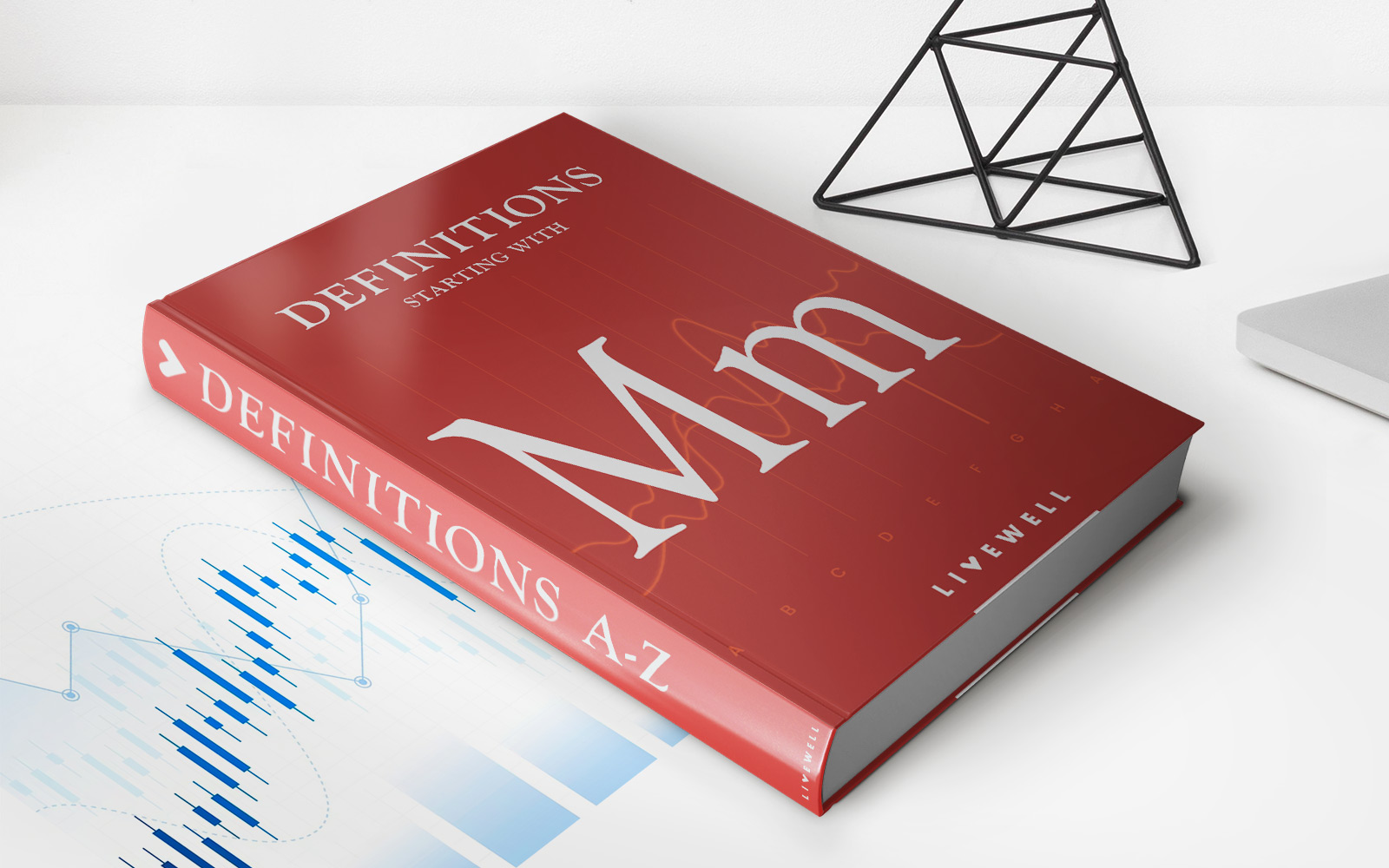Home>Finance>How Are Load Mutual Funds Different From No-Load Mutual Funds?


Finance
How Are Load Mutual Funds Different From No-Load Mutual Funds?
Modified: February 21, 2024
Discover the key differences between load and no-load mutual funds in the world of finance. Learn which option may be right for your investment strategy.
(Many of the links in this article redirect to a specific reviewed product. Your purchase of these products through affiliate links helps to generate commission for LiveWell, at no extra cost. Learn more)
Table of Contents
- Introduction
- Definition of Load Mutual Funds
- Definition of No-Load Mutual Funds
- Key Differences Between Load and No-Load Mutual Funds
- Load Mutual Funds: Advantages and Disadvantages
- No-Load Mutual Funds: Advantages and Disadvantages
- Factors to Consider When Choosing Between Load and No-Load Mutual Funds
- Conclusion
Introduction
Welcome to the world of mutual funds, where investors have a vast array of choices to suit their financial goals and risk appetites. If you’re considering investing in mutual funds, you may have come across the terms “load mutual funds” and “no-load mutual funds.” But what do these terms mean, and how do they differ from each other?
Simply put, load mutual funds refer to funds that charge investors a sales commission or fee when they purchase or redeem shares. On the other hand, no-load mutual funds do not impose any sales charges or fees. Understanding the differences between these two types of funds is crucial for investors, as it can impact their investment returns and overall financial objectives.
In this article, we will delve into the definition of load and no-load mutual funds, explore their key differences, and weigh the advantages and disadvantages of each. Additionally, we will discuss the factors to consider when choosing between these two options, to help you make an informed decision that aligns with your investment strategy.
So whether you’re a seasoned investor or a newcomer to the world of mutual funds, buckle up as we dive into the intriguing world of load and no-load mutual funds.
Definition of Load Mutual Funds
Load mutual funds are investment funds that come with a sales charge or commission fee. When investors purchase shares of a load mutual fund, a percentage of their investment is deducted as a sales charge. This charge is typically paid to the financial advisor or broker who facilitates the transaction.
The sales charge associated with load mutual funds can either be front-end loads or back-end loads. Front-end loads, also known as “entry loads,” are deducted at the time of purchase. For example, if a load mutual fund has a front-end load of 5%, and an investor invests $10,000, $500 will be deducted as the sales charge, and the remaining $9,500 will be invested in the fund. Back-end loads, also called “exit loads” or contingent deferred sales charges (CDSC), are incurred when an investor sells their shares within a specific timeframe. The sales charge typically decreases the longer the investor holds the investment.
The purpose of load mutual funds is to compensate financial advisors or brokers for their services and expertise in selecting and managing the fund. These advisors provide advice, research, and ongoing support to investors, guiding them in making informed investment decisions. Load funds are often marketed as a complete package, where investors gain access to professional management and personalized guidance.
It’s important to note that the sales charge associated with load mutual funds does not directly impact the fund’s performance. The charge is separate from the fund’s expense ratio, which includes fees for managing the fund, administrative costs, and other operational expenses.
Load mutual funds are categorized into different classes based on the sales charges and fee structures. These classes may include Class A, Class B, Class C, and Class R shares, each with its own unique fee structure and commission arrangement. The class chosen by an investor will determine the magnitude and timing of the sales charges.
Now that we have explored the definition of load mutual funds, let’s move on to understanding their counterpart – no-load mutual funds.
Definition of No-Load Mutual Funds
No-load mutual funds refer to investment funds that do not charge any sales commission or fee to investors when they buy or sell shares. These funds are designed to provide investors with a cost-effective way to invest in a diversified portfolio of securities.
Unlike load mutual funds, which deduct a portion of the investor’s investment as a sales charge, no-load mutual funds allow investors to invest the full amount of their capital into the fund. This means that every dollar invested goes directly towards purchasing fund shares, maximizing the investor’s potential returns.
No-load mutual funds are typically marketed as a DIY (do-it-yourself) investment option, as investors can purchase shares directly from the fund company or through an online brokerage platform, bypassing the need for a financial advisor or broker. This direct approach enables investors to save on sales charges and potentially enjoy lower expense ratios compared to load funds.
While no-load mutual funds do not charge upfront or back-end sales fees, they may still have other fees associated with them, such as management fees and administrative expenses. These costs, known as the fund’s expense ratio, are expressed as a percentage of the fund’s net assets and are used to cover the fund’s operating expenses.
No-load mutual funds are often favored by self-directed investors who prefer to make their own investment decisions. They offer flexibility and ease of access, allowing investors to manage their portfolios according to their own risk tolerance and investment goals.
To further enhance the appeal of no-load mutual funds, some fund companies provide additional services and resources, such as online educational materials, research tools, and investor support. These resources can empower investors to make informed investment decisions and gain a better understanding of their investment portfolios.
It’s important to note that just because a mutual fund is labeled as “no-load” does not imply that it is without any costs or risks. As with any investment, there are potential risks involved, including the risk of loss of principal. Therefore, investors should carefully evaluate the fund’s investment objectives, performance track record, and associated costs before making an investment decision.
Now that we have defined no-load mutual funds, let’s explore the key differences between load and no-load mutual funds in the next section.
Key Differences Between Load and No-Load Mutual Funds
Load mutual funds and no-load mutual funds differ in several significant ways. Understanding these differences can help investors make informed decisions when allocating their investment capital. Here are the key distinctions between load and no-load mutual funds:
- Sales Charges: The primary difference between load and no-load mutual funds is the presence or absence of sales charges. Load mutual funds impose a sales commission or fee, whereas no-load mutual funds do not charge any sales fees.
- Accessibility: Load funds are typically sold through financial advisors or brokers who receive compensation for their services. No-load funds, on the other hand, can be purchased directly from the fund company or through online brokerage platforms, allowing investors to bypass intermediaries.
- Cost Structure: Load mutual funds have expense ratios that consist of the sales charge, management fees, and administrative costs. In contrast, no-load mutual funds have expense ratios that primarily cover management fees and administrative expenses, with no sales charges.
- Investment Advice: Load mutual funds often come with the guidance and support of a financial advisor. Investors who opt for load funds typically have access to professional investment advice and personalized recommendations. No-load mutual funds, being self-directed options, do not provide direct advice or guidance from a financial professional.
- Performance Impact: The sales charge associated with load mutual funds does not directly affect the fund’s investment performance. However, the impact on the investor’s overall returns can be significant, as a portion of their initial investment is deducted as a sales fee. No-load mutual funds, with no sales charges, allow investors to invest the full amount of their capital from the start.
- Cost Savings: Investing in no-load mutual funds can potentially result in cost savings compared to load funds. By avoiding sales charges, investors can allocate a larger portion of their investment capital towards purchasing fund shares, potentially maximizing their returns over the long term.
It’s important to note that both load and no-load funds have their own merits and drawbacks. The choice between them depends on an investor’s individual preferences, investment goals, and the level of guidance they require. It’s recommended that investors thoroughly research and evaluate the fees, performance history, and investment objectives of different mutual funds before making investment decisions.
In the next sections, we will explore the advantages and disadvantages of load and no-load mutual funds, as well as the factors to consider when choosing between them.
Load Mutual Funds: Advantages and Disadvantages
Load mutual funds, despite their sales charges, offer certain advantages and disadvantages to investors. Understanding these pros and cons can help investors determine if load funds align with their investment strategy. Here are the advantages and disadvantages of load mutual funds:
Advantages:
- Professional Guidance: Load funds often provide investors with access to financial advisors or brokers who offer personalized investment advice and guidance. This can be beneficial for investors who desire professional assistance in navigating the complex world of investing.
- Research and Analysis: The sales charges associated with load funds help fund companies invest in research and analysis capabilities. As a result, investors may have access to in-depth market research, company analysis, and fund selection expertise.
- Investment Expertise: Load funds are typically managed by experienced investment professionals who have a track record of managing portfolios. Investors can benefit from the expertise and knowledge of these fund managers, potentially enhancing their investment returns.
- Additional Services: Some load funds may offer additional services such as educational resources, financial planning tools, and customer support. These resources can add value to investors’ overall experience and help them make informed investment decisions.
Disadvantages:
- Sales Charges: The primary drawback of load mutual funds is the sales charges or fees that investors incur. These charges can reduce the initial investment amount or erode the overall returns, particularly if the investor sells the fund shares within a short period.
- Expense Ratios: In addition to the sales charges, load mutual funds also have expense ratios that cover management fees and other operational costs. These expenses can reduce the net returns generated by the fund.
- Limited Flexibility: Load mutual funds typically have various share classes with different fee structures and commission arrangements. This can limit an investor’s flexibility, as it may be challenging to switch between share classes or exit the fund without incurring additional charges.
- Dependency on Advisors: While professional guidance can be an advantage, it can also result in a level of dependency on financial advisors or brokers. Investors who rely heavily on the advice and recommendations of these professionals may give up some control over their investment decisions.
It’s essential for investors considering load mutual funds to carefully evaluate the fees and expenses associated with these funds, as well as the value they receive in terms of personalized guidance and services. Conducting thorough research and comparing different load funds can help investors choose the most suitable option for their investment goals and risk tolerance.
In the next section, we will explore the advantages and disadvantages of no-load mutual funds.
No-Load Mutual Funds: Advantages and Disadvantages
No-load mutual funds have gained popularity among self-directed investors for their cost-effectiveness and accessibility. While they do not impose any sales charges, they still offer certain advantages and disadvantages. Let’s explore the pros and cons of investing in no-load mutual funds:
Advantages:
- Cost Savings: The absence of sales charges is a significant advantage of investing in no-load mutual funds. Investors can allocate their entire investment capital towards purchasing fund shares, maximizing their potential returns.
- Flexibility and Accessibility: No-load mutual funds can be purchased directly from the fund company or through online brokerage platforms. This accessibility allows investors to have greater control over their investment decisions and offers the flexibility to research and choose funds that align with their goals and preferences.
- Diverse Investment Options: The universe of no-load mutual funds is vast, offering a wide range of investment options across various asset classes and investment strategies. Investors can diversify their portfolios and access different sectors, regions, or investment styles to spread their risk.
- Lower Expense Ratios: No-load funds tend to have lower expense ratios compared to load mutual funds. With fewer overhead costs, these funds pass on the cost savings to investors through lower management fees and administrative expenses.
Disadvantages:
- Lack of Personalized Advice: No-load funds are generally designed for self-directed investors who prefer to make their own investment decisions. Investors who require extensive guidance and personalized advice may miss out on the assistance provided by financial advisors or brokers.
- Self-Responsibility: Investing in no-load mutual funds requires investors to take on more responsibility for their investment decisions and portfolio management. This requires a level of knowledge, research, and monitoring to make informed choices and maintain a well-balanced portfolio.
- Availability of Resources: While some fund companies offer online tools, educational resources, and research materials, the extent of these resources may vary. Investors who prefer access to in-depth research or additional services may need to look for alternative sources or pay for such resources separately.
- Market Volatility: No-load mutual funds, like all investments, are subject to market risks. Investors should be prepared for potential fluctuations in the value of their investment and understand that there are inherent risks associated with investing in securities.
It’s essential for investors considering no-load mutual funds to carefully evaluate their own investment expertise, risk tolerance, and desired level of control over their portfolios. Assessing expenses, conducting thorough research, and diversifying investments can help investors make informed decisions and achieve their long-term financial goals.
In the next section, we will discuss the factors to consider when choosing between load and no-load mutual funds.
Factors to Consider When Choosing Between Load and No-Load Mutual Funds
When deciding between load and no-load mutual funds, there are several factors that investors should consider to ensure their investment aligns with their goals and preferences. Here are the key factors to evaluate when choosing between load and no-load mutual funds:
- Investment Goals: Consider your investment objectives, time horizon, and risk tolerance. Determine if load or no-load mutual funds offer investment options that align with your goals. For example, if you are seeking specialized expertise and personalized advice, load funds may be a better fit. If you prefer a more hands-on, self-directed approach, no-load funds may be preferable.
- Costs and Fees: Evaluate the sales charges and expense ratios associated with load funds. Determine if the potential benefits, such as professional guidance, outweigh the costs. Compare the expense ratios of load and no-load funds to assess the level of savings and impact on your investment returns.
- Access to Advice: Consider whether you require or prefer access to financial advisors or brokers. Load funds often provide personalized advice, while no-load funds require self-directed decision-making. Assess your comfort level and confidence in making investment decisions on your own.
- Investment Selection: Evaluate the range of investment options offered by both load and no-load funds. Consider the asset classes, investment strategies, and diversification opportunities available. Determine if either category offers more suitable choices for achieving your desired level of diversification and risk management.
- Asset Allocation: Examine the asset allocation models offered by both load and no-load funds. Determine if either category has a proven track record in line with your desired investment allocations, such as stocks, bonds, or alternative investments.
- Investment Timeframe: Consider your investment timeframe and liquidity needs. Evaluate if load or no-load funds align with your investment horizon and investment strategy. Examine any redemption fees associated with load funds and determine if they are suitable for your investment holding period.
- Investment Research: Assess the availability and quality of research resources provided by both load and no-load funds. Determine if you require in-depth market research, analysis reports, or other research tools. Consider if these resources are provided by the fund company or if you need to source them externally.
It’s essential to conduct thorough research and review the prospectuses, fact sheets, and other fund documentation before making an investment decision. Additionally, seek professional advice, if needed, to ensure you make an informed choice based on your individual financial situation and investment objectives.
Remember, each investor’s circumstances and preferences are unique. What works for one may not be the best fit for another. By carefully considering these factors, you can select the type of mutual fund that aligns with your investment goals and aids you in achieving long-term financial success.
In the concluding section, we will summarize the key points discussed in this article.
Conclusion
Load and no-load mutual funds offer investors two distinct approaches to investment management, each with its own advantages and disadvantages. Load funds come with sales charges that provide access to professional guidance and personalized advice, while no-load funds offer cost savings and accessibility for self-directed investors.
When choosing between load and no-load mutual funds, it’s crucial to consider factors such as your investment goals, costs and fees, access to advice, investment selection, asset allocation, investment timeframe, and research resources. By carefully evaluating these factors, you can make an informed decision that aligns with your financial objectives and investment strategy.
Load mutual funds can be appealing for investors who prefer professional guidance, research capabilities, and a complete package of services. While sales charges reduce the initial investment and expense ratios can impact returns, the potential benefits of expertise and personalized advice may outweigh the costs for certain investors.
No-load mutual funds, on the other hand, offer cost savings, flexibility, and accessibility. With no sales charges, investors can invest the full amount of their capital, potentially maximizing returns. These funds are suitable for self-directed investors who prefer a more hands-on approach and independence in making investment decisions.
Ultimately, the choice between load and no-load mutual funds depends on your individual preferences, investment goals, and level of comfort with self-direction or professional guidance. It’s essential to conduct thorough research, compare different funds, and consult with a financial advisor if needed.
Investing in mutual funds should align with your long-term financial goals and risk tolerance. Remember that investing involves risks, and past performance is not indicative of future results. By understanding the differences between load and no-load mutual funds, and considering the factors discussed in this article, you can make an informed decision that sets you on the path toward achieving your financial objectives.














